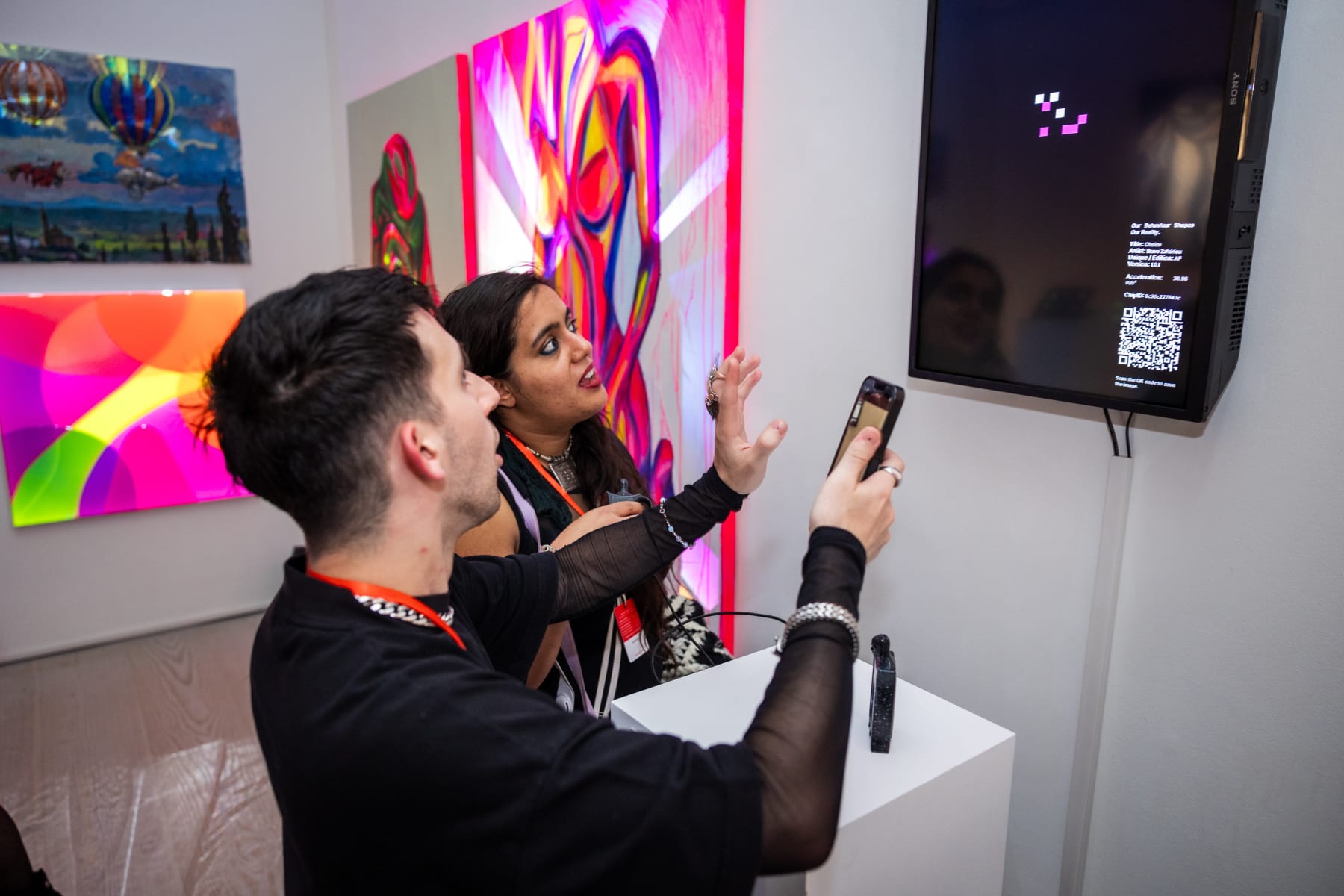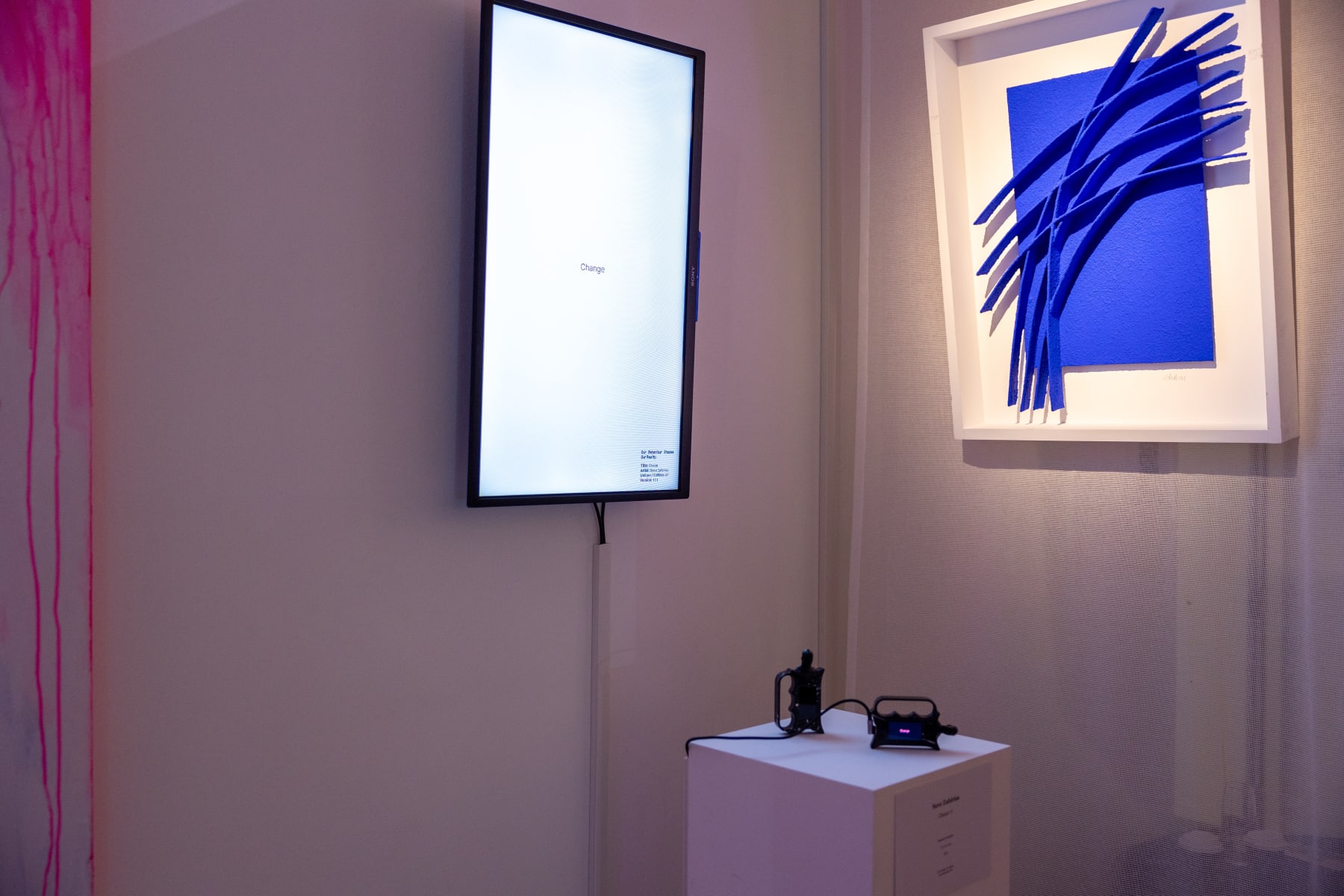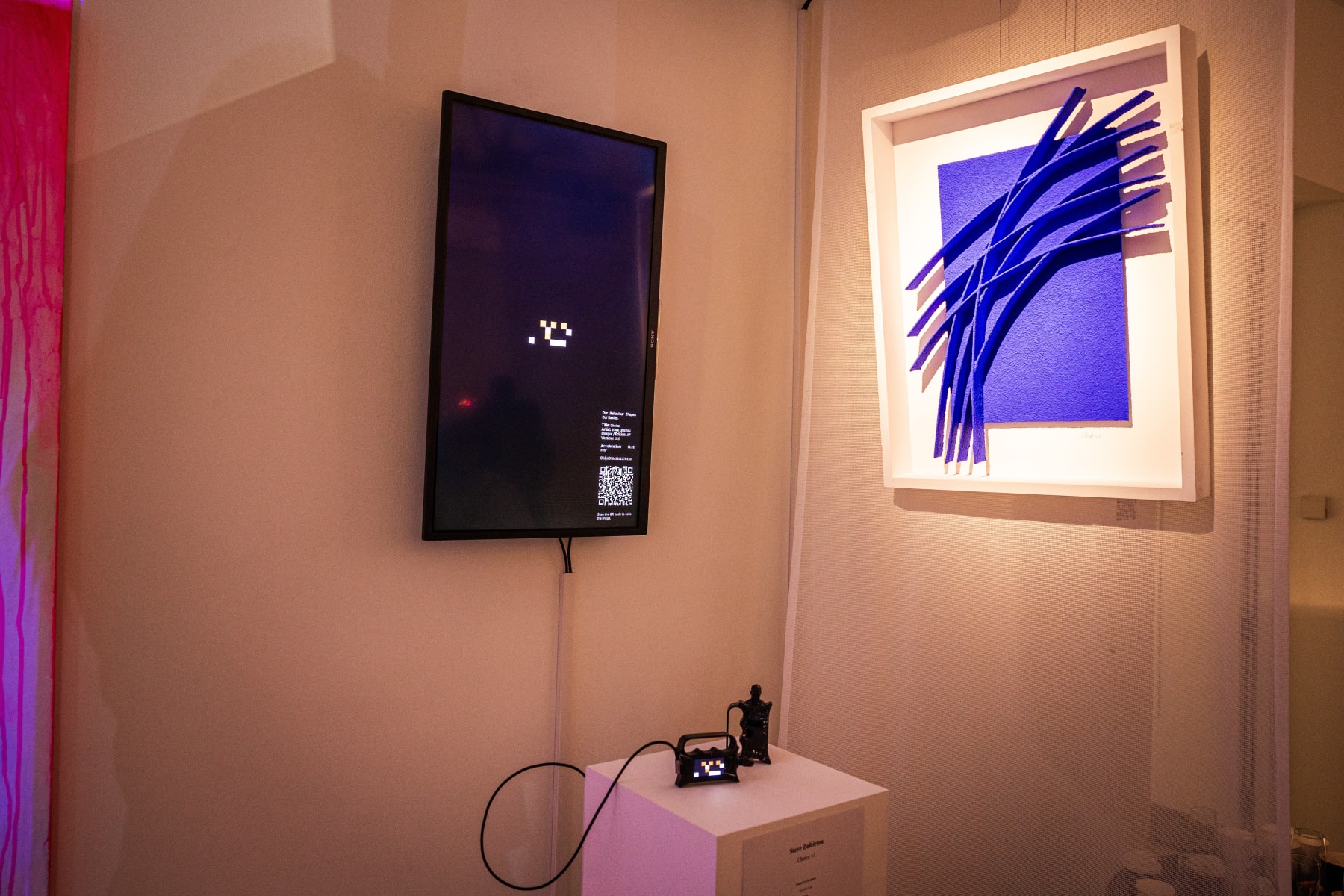Interview with Steve Zafeiriou: Exploring Art, Technology, and Human Behaviour
Kei London:
Steve, it's great to have you here. Could you start by introducing yourself, giving us some background on your work, and sharing your latest project with us?
Steve Zafeiriou:
Thank you, Arash. My name is Steve Zafeiriou, and my work focuses on the intersection between human behaviour and technology. I have a background in electronic engineering, and I use coding and engineering to express my artistic vision. Today, I'm excited to share my latest creation - an interactive sculpture.
This sculpture uses sensors to respond to how people interact with it. Based on these interactions, it generates digital images in real-time. Each unique image can be saved or printed using a QR code, and collectors can create profiles to store their images and even earn badges based on their interaction with the piece. The concept behind the sculpture, called Choice, is that small, consistent actions shape our reality, much like our choices shape our lives. I'm currently working on a second prototype, which will feature haptic feedback, allowing those with visual impairments to experience the artwork through small vibrations.
There's a game-like logic behind it as well, where the patterns and colours change depending on how quickly or slowly you move the device. It's all about how our behaviour, no matter how small, impacts the world around us.
Kei London:
That's fascinating! What inspired this concept, and where do you see it going in the future?
Steve Zafeiriou:
It's interesting because when I look at my portfolio, I realise that all my work explores different aspects of human behaviour. This piece is about choices, but I have other installations that focus on emotions or cultural factors that influence how we perceive the world. I love using technology to observe and measure human behaviour - the sensors and algorithms I use collect data that helps create a visual representation of my curiosity.
In the future, I see this project becoming more collaborative. Each sculpture owner could generate their own images and interact with other users through a connected digital platform. As people collect badges or complete different actions, their output evolves. I'm also excited about exploring how this could be used in research, especially with the addition of haptic feedback, which could allow someone without vision to experience digital art in a new way.
Kei London:
It's an innovative approach! How do you explain this concept to collectors, especially those who might not be familiar with this type of art, like younger generations or even older collectors?
Steve Zafeiriou:
For me, it's all about showcasing innovation. Digital art is evolving beyond just creating an image on Photoshop. We now have the tools to push the boundaries of what's possible. For younger collectors, especially those familiar with technology or cryptocurrencies, it's easier to understand the technological aspect. For older collectors, it's more about the research and impact behind the project, such as the haptic feedback research.
This sculpture creates an ecosystem that combines physical and digital art. For example, someone might be able to mint the images generated by the sculpture as NFTs in the future. It's not just about owning a piece of art - it's about engaging with a community and a platform that evolves with you.
Kei London:
It's a unique way of engaging with art. Imagine a collector brings this sculpture home and shows it to friends - how would they explain its significance and the process behind it?
Steve Zafeiriou:
That's a great question. When I first developed the sculpture, I thought of it as a game - something you could hold and interact with, changing colours and patterns based on your movements. There's an entire psychology behind how the algorithm keeps you engaged, adapting based on your behaviour.
As I developed the design, I realised it's also something you'd want to display, like a piece of art on your coffee table. It becomes a conversation starter - you can tell people how your interaction with the sculpture creates a unique digital image. And, as we move into the future, these images can be part of the blockchain, offering a unique digital collectible experience.
Kei London:
It sounds like there are endless possibilities. How does the device measure emotions, and what data does it use to create these patterns?
Steve Zafeiriou:
At the moment, the sculpture primarily measures stress levels based on how quickly or slowly someone interacts with it. For example, if you move it fast, the sculpture might show more intense patterns, suggesting a stressful interaction. If you move it slowly and steadily, the colours shift to something more calming.
In the future, I want to expand on this by incorporating more data points - perhaps using a camera to track facial expressions or heart rate sensors to monitor emotional states. There's a lot of potential to explore how technology can read human emotions and reflect them back through art.
Kei London:
That's incredible. It's really about connecting the digital world with the human experience. Do you see this evolving into something even more advanced, like collaborating with companies to integrate this into everyday technology?
Steve Zafeiriou:
Absolutely. The possibilities are endless. For example, brands could use this type of technology to engage customers in unique ways, such as connecting products like shoes with RFID chips and allowing people to interact with them through a digital platform. It's all about creating a community that merges physical objects with digital experiences.
This sculpture is just the beginning - it's a step towards a future where art, technology, and human behaviour intersect in exciting and meaningful ways.
Kei London:
It's truly fascinating, Steve. Thank you for sharing your vision with us. We're excited to see where this journey takes you!
Steve Zafeiriou:
Thank you so much










